Islam is a religion of over 1.6 billion followers and some of the largest mosques in the world can accommodate hundreds of thousands if not millions of people. Places like the Haram in Saudi Arabia see millions of people throughout the mosque and area of the Haram (Sanctuary) during times such as Ramadan and the Hajj.
So with some many devout followers, and requirements to pray 5 times daily, its no surprise that some of the largest religious buildings in the world are Masjids (Mosques in Arabic). So lets look at the list of the largest masjids in the world.
While there are many ways to describe “Largest”, we have ranked these in reverse order by published capacity numbers.
So starting with Number 10.
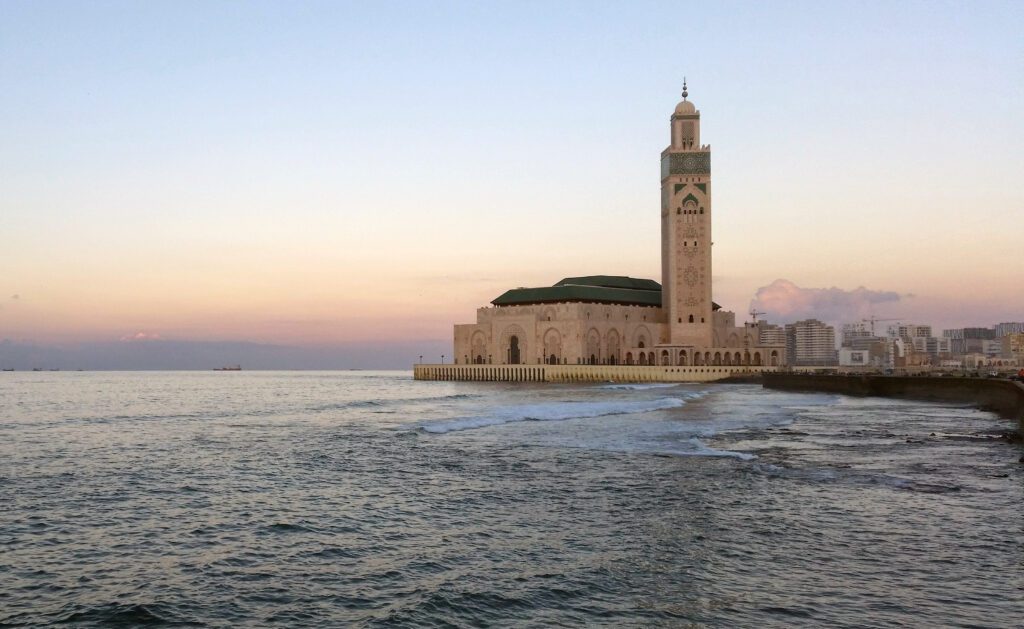
10. Hassan II Mosque – Casablanca, Morocco
Capacity: 100,000 Area: 105,000 square meters Built: 1993
Formerly the largest Mosque in North Africa, the Hassan II Mosque is the 10th largest Mosque in the World. The massive minaret for the mosque is also the second largest minaret on a mosque in the world as well.
Named for King Hassan II (King of Morocco from 1961 – 1999), the mosque was build during his lifetime and designed by architect Michel Pinseau. The Mosque sits on a small land mass jutting into the Atlantic Ocean with several parts built over water.
The beautiful mosque blends architectural elements from Moorish and other Islamic architecture styles while still featuring a more contemporary design in places. 100,000 worshippers can fit within the walls, and while that’s a lot it’s far fewer than other mosques on the list.
9. Djamaa el Djazaïr – Algiers, Algeria
Capacity: 120,000 Area: 400,000 square meters Built: 2019
Also known as the Great Mosque of Algiers, the 9th Largest Mosque is certainly great. As one of the newer mosques on the list it passed Hassan II to be the largest in North Africa. Construction for the mosque began in 2012 and took over 7 years and over 1 billion euros to complete.
The Masjid sits on a beautiful patch of land overlooking the Mediterranean ocean and has space for 400,000 worshippers and 7,000 cars. I suppose you seriously need to carpool if you go.
The complex has in addition to the mosque a school, library, museum of Islamic Art, fire station, park, and research center. The mosque blends traditional Islamic art styles with modern and contemporary designs to create a true work of art.
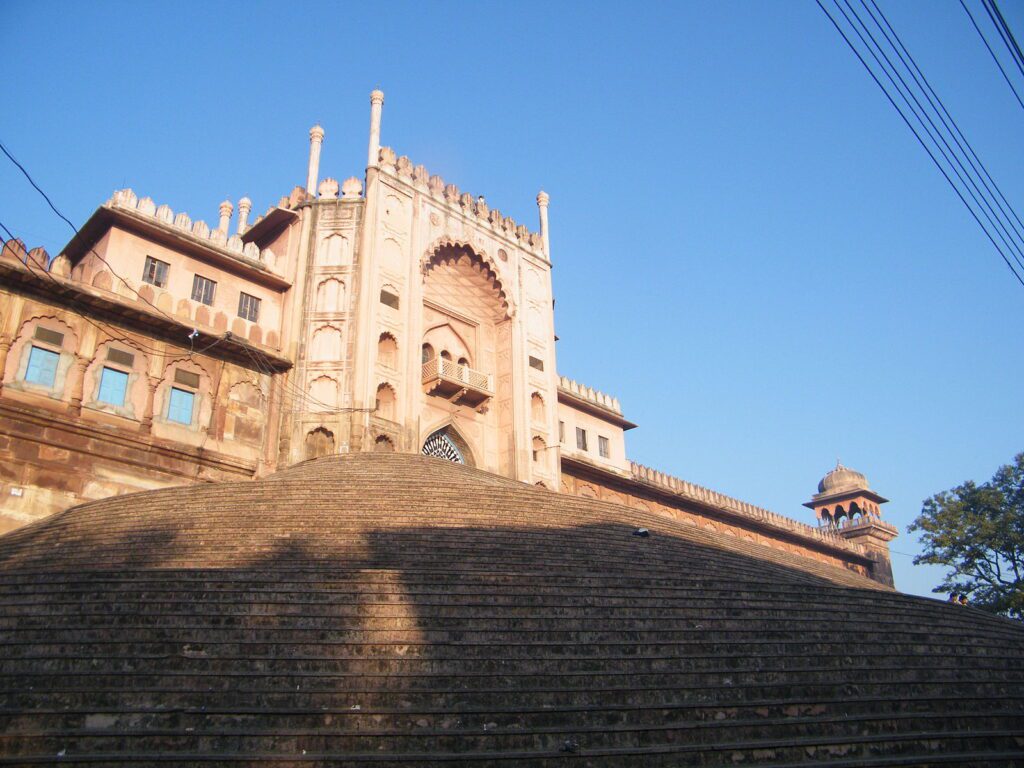
Taj-ul-Masajid – Bhopal, India
Capacity: 175,000 Area: 23,000 square meters Built: 1305
The Largest Mosque in India and the 8th Largest Masjid in the World is the Tajul Masjid in Bhopal. The Mosque is design-wise based on the Jama Masjid in Delhi but was built to be about 1/3 larger.
The Mosque has an interesting story. Began as a project by Shah Jahan Begum, the project actually did not finish during her lifetime. Funds for construction ran dry and construction did not resume until 1971!
The area contains the masjid, library, and a seminary and is currently the largest mosque in India.
Note: I’ve been having trouble finding exact figures on capacity. So let me know if you find out it’s actually smaller.
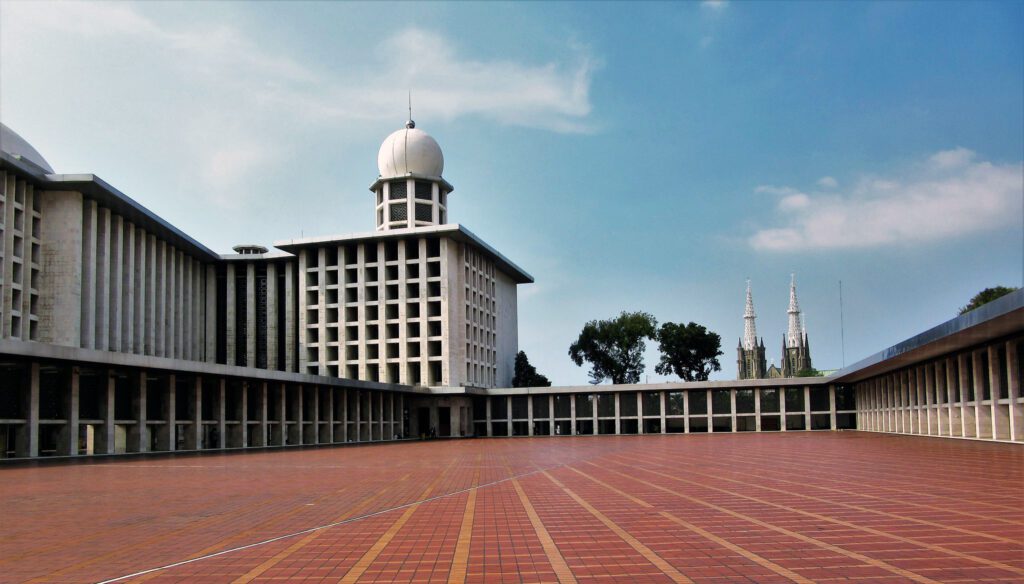
Istiqlal Mosque – Jakarta, Indonesia
Capacity: 200,000 Area: 100,000 square meters Built: 1978
It should come as no surprise that Indonesia, one of the largest Muslim majority countries has one of the largest mosques in world. Istiqlal Mosque (or Independence Mosque) is the largest mosque in South East Asia by capacity. Istiqlal means “Independence” in Arabic and a common word for many mosques and streets throughout countries with Arabic influence.
The Masjid was constructed to commemorate Indonesian Independence (Although it opened to the public in February instead of August). Construction of the Mosque actually began in 1961 under Sukarno and took 17 years to complete construction.
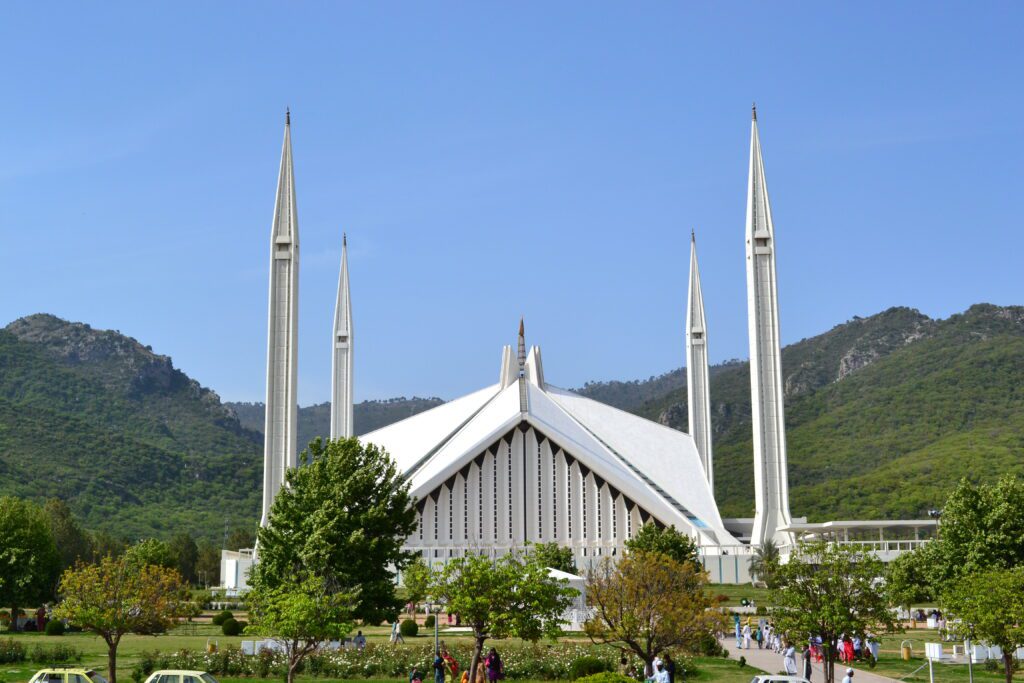
Faisal Mosque – Islamabad Pakistan
Capacity: 300,000 Area: 130,000 square meters Built: pre 1986
The 6th largest mosque in the World is in Pakistan. It will be the largest mosque in Pakistan until the final completion of Grand Jamia Mosque in Karachi. It was also recently also the largest mosque in South Asia.
This mosque is I believe quite beautiful in it’s more contemporary architecture. By blending in both traditional and modern design elements it creates a unique design for this Masjid.
The masjid is named for Saudi’s King Faisal who donated for the construction of this Masjid and is designed by Turkish architect, Vedat Dalokay.
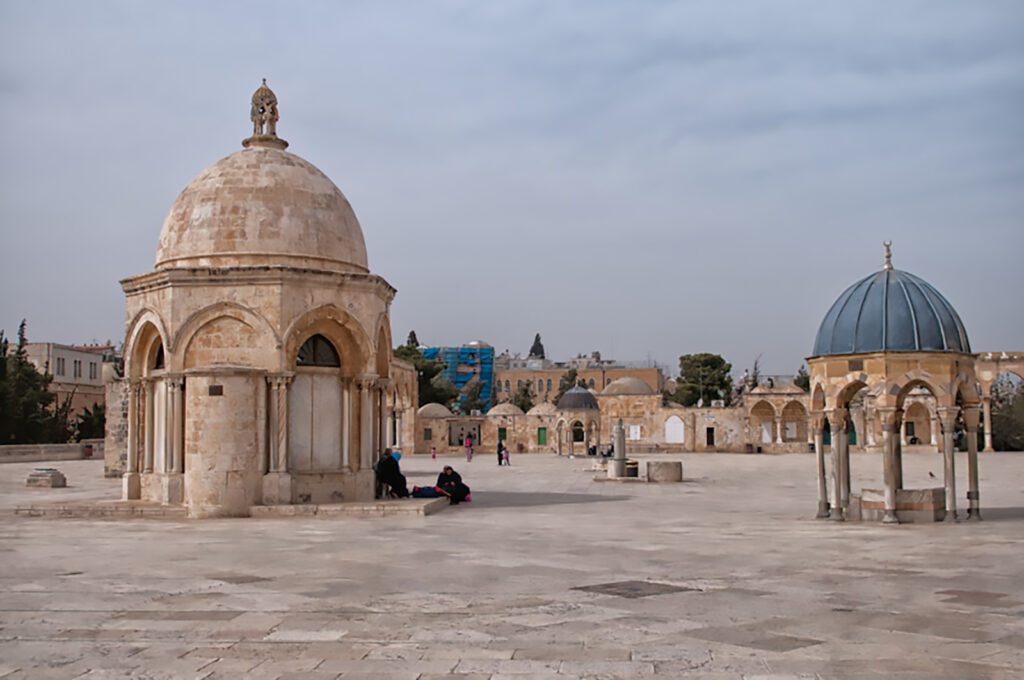
Al-Aqsa Mosque Compound – Jerusalem
Capacity: 400,000 Area: 150,000 square meters Built: pre 632 / 692
Built on an area revered by Muslims, Christians, and Jews, Al-Aqsa mosque or “The Farthest” is known as the 3rd holiest site in Islam. The area was known as the area of the Temple Mount or where Muslims call the Noble Sanctuary (Haram Al-Sharif).
The area was the first “Qibla” or direction that Muslims prayed prior to Muslims changing direction to Mecca. The Dome of the Rock is built upon the stone that Muslims believe Prophet Muhammed ascended on his night visit to heaven.
The listing of this as the 5th largest may be contested. Al-Aqsa mosque itself is not the 5th largest mosque, however, the whole area of the Noble Sanctuary is considered part of the same complex. Prayers can and do happen in the courtyard as well as within the Dome of the Rock as well. Folks can even actually pray below the rock in the dome.
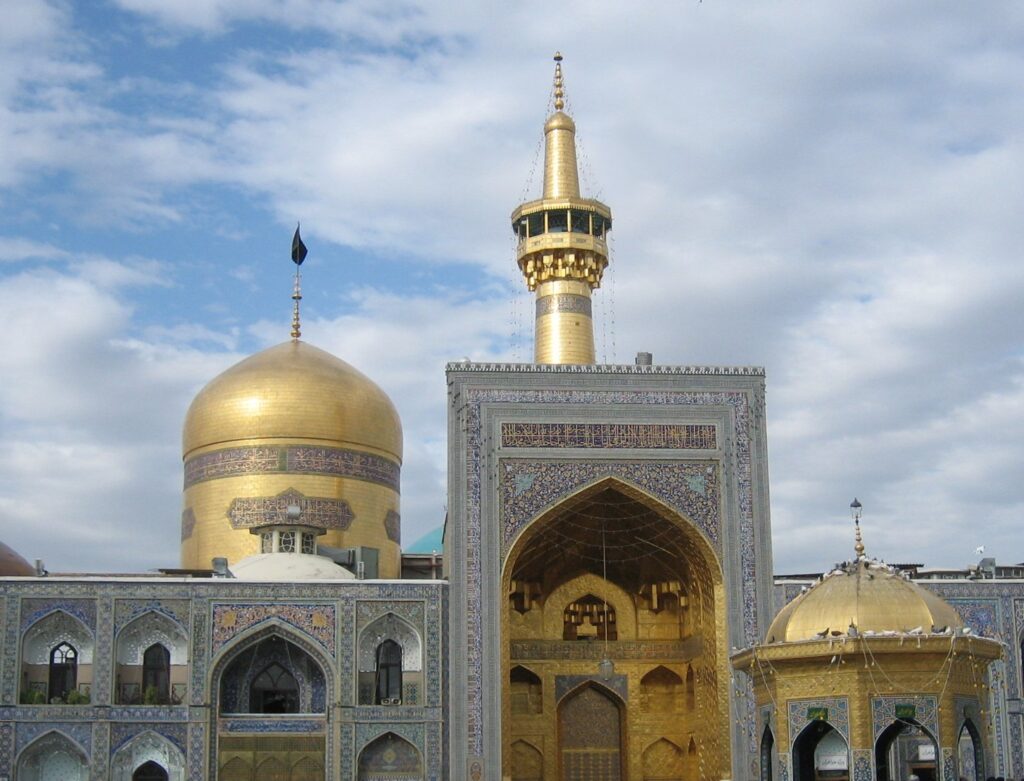
Imam Reza Shrine – Mashhad, Iran
Capacity: 700,000 Area: 1,000,000 square meters Built: 818
Ranking in the 4th largest capacity, the Imam Reza Shrine is actually the largest by area. The shrine is a complex that includes many important buildings and artifacts for Shias. The mausoleum of Imam Reza (one of the Twelver Shia Imams) is obviously one of the most important parts of the complex. Additionally, there are libraries, seminaries, cemetery, and a museum in the compound and a popular attraction for tourists visiting the area. As well an important Shia pilgrimage site.
Martyred in the year 818, his tomb is a focal point of the shrine and mosque. Over the centuries alterations and expansion grew it into the large complex it is today. It is one of the most visited tourist sites in the country.
Interesting Fact: Ibn Battuta known for his famous voyages visited Mashhad and the Shrine in the 14th century.
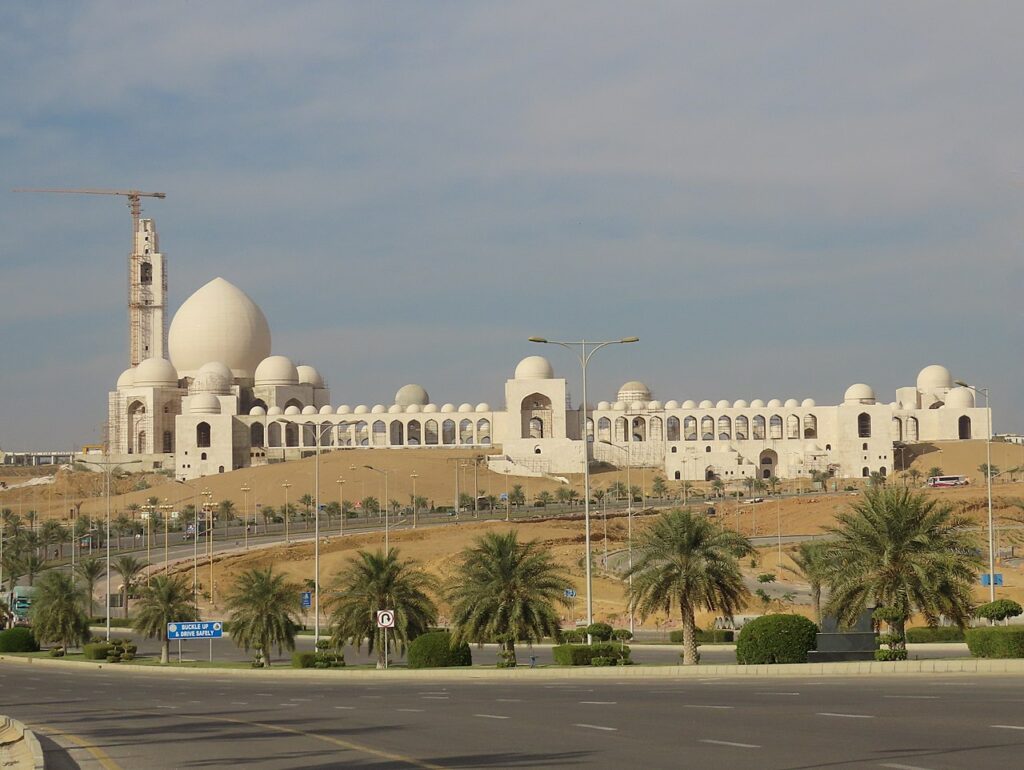
Grand Jamia Mosque – Karachi, Pakistan
Capacity: 950,000 Area: 200,000 square meters Built: 2022
I wondered whether or not to include this mosque in list. The Grand Jamia Mosque is schedule to be completed in 2022 and will be the 3rd largest mosque by Capacity. The mosque blends many different architectural styles from Ottoman, to Persian and Arabic. The masjid will contain 150 domes in total throughout the mosque. The mosque was constructed on a hill and in a more open area to be visible from far away. You almost wish it was more centrally located.

Masjid An-Nabawi – Medina, Saudi Arabia
Capacity: 1,500,000 Area: 384,000 square meters Built: 623AD
The second holiest Mosque in Islam and one of the most beautiful as well. Masjid An-Nabawi or the Prophet’s Mosque is one also known as the city and place where Prophet Muhammed is buried.
The Mosque and grounds can accommodate large number of worshippers (definitely nowhere near as many as the largest mosque below) and while it is often crowded it doesn’t feel as much so as some other mosques.
The grounds of the mosque also open up during busier periods of time such as Friday prayers. One of the best features of the mosque are the automatic umbrellas that open to shade worshippers from the sun.
Many Muslims line up for hours to try to visit the inner area called the Rawdah ash-Sharifah (the noble garden). The area is between where the prophet’s grave is and his pulpit (minbar). It’s situated in a way that you cannot prayer towards the prophet.

Masjid Al-Haram- Mecca, Saudi Arabia
Capacity: 4,000,000 Area: 356,000 square meters Built: Area/Kaaba pre-date Islam
The Largest and most Important Mosque in Islam is the Masjid Al-Haram which houses the Ka’aba, the black cube building that Muslims face in the direction of during prayer. Al-Haram or Sanctuary is a place that is considered a sanctuary and things like fighting, war, etc. are prohibited in it’s vicinity.
The Masjid has seen Expansion over the generations, in particular more recently in the last several decades. Multiple new expansion areas have been added of multi-floor prayer areas. Also, the area around the Mosque is still considered part of the “Haram” and considered prayer in the mosque. This is an important distinction as there is higher benefit to Muslims for praying within the area of this particular mosque.
There are times such as during the last 10 days of Ramadan, that the capacity of the mosque is tested.
Other Posts you May Like
- Explore the Al-Fateh Mosque in Bahrain
- Visiting the Al-Hofuf Oasis in Saudi Arabia
- Places to Visit in Oman
Have you visited any of these mosques? Would love to hear your first hand accounts. Or if you have any corrections to the information.
Comment below or email us!

Leave a Reply